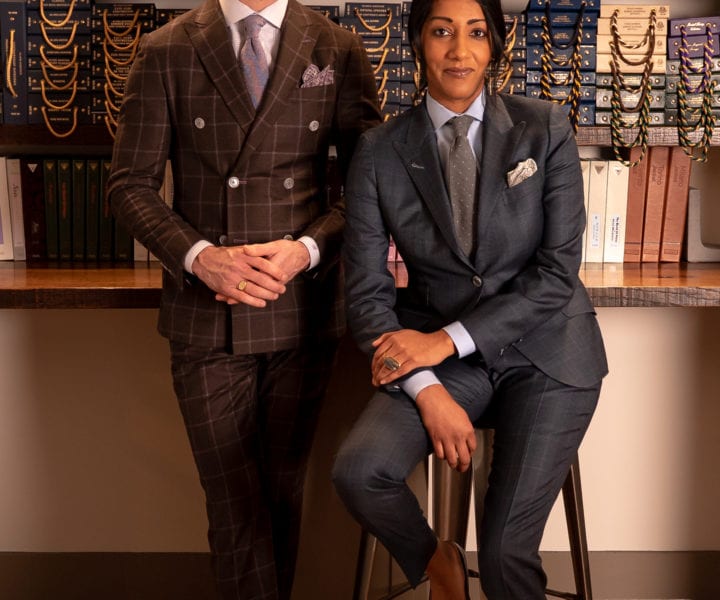A Deep Dive Into the World of Tailors: Methods, Devices, and Patterns Forming Modern Style Design
The globe of tailoring is a compelling intersection of classic craftsmanship and advanced technology, shaping the textile of modern style style. From the necessary devices that artisans possess to ingenious techniques that redefine fit and design, the customizing landscape is developing.
The Art of Tailoring
The response lies in the precise workmanship and customized fit that tailoring embodies. Master customizes not only have technological skills however additionally an inherent sense of design, allowing them to develop garments that boost an individual's silhouette while making certain convenience.
At the core of customizing is the capability to attain an exact fit. This includes taking comprehensive dimensions and making adjustments that represent the unique percentages and choices of the wearer. Tailors make use of different techniques-- such as darting, curtaining, and shaping-- to contour the material effortlessly to the body. The choice of materials likewise plays an essential role; top notch fabrics add to the overall aesthetic and long life of the garment.
Moreover, the artistry of customizing prolongs past plain construction. It includes the thoughtful selection of information, consisting of sewing patterns, button positionings, and cellular linings, which jointly elevate an item from average to extraordinary. Basically, the art of customizing transforms textile into an artwork, showing the uniqueness and design of the wearer.
Important Tools for Tailors
A successful tailor depends on a collection of important devices that are fundamental to the craft of tailoring. Among one of the most critical instruments are high-quality scissors, developed for accuracy cutting of fabric and thread. Tailors likewise use rotating cutters, which provide performance and accuracy, especially for straight lines and intricate patterns.
Measuring devices, such as measuring tape, leaders, and yardsticks, are important for ensuring proper fit and placement. Furthermore, dressmaker's chalk or fabric markers are utilized for marking changes and patterns without harming the fabric.
Stitching equipments, varying from fundamental designs to advanced electronic variations, play a central role in the crafting process, enabling consistent stitching and finishing. Similarly crucial are needles and thread, which need to be selected according to the textile type to ensure sturdiness and visual allure.

Cutting-edge Strategies in Tailoring
As the apparel industry advances, tailors are increasingly adopting cutting-edge strategies that enhance both the craftsmanship and effectiveness of their work. One substantial development is the integration of electronic innovations, such as 3D body scanning and computer-aided design (CAD) These tools make it possible for tailors to produce precise patterns that fit the special contours of each customer, decreasing the requirement for numerous fittings and changes.
Moreover, the rise of automated stitching equipments has changed typical techniques, allowing for faster production times without sacrificing top quality. These equipments can carry out intricate stitching and describing that would certainly be time-consuming when done by hand. In addition, making use of laser cutting technology has streamlined the reducing process, making certain accuracy and minimizing material waste.
Sustainability is likewise affecting cutting-edge methods in tailoring. Several dressmakers are now discovering zero-waste patterns and upcycling materials, contributing to even more environmentally aware practices within the industry. Collaborative techniques, where tailors function carefully with designers and customers, foster creativity and make sure that garments reflect the one-of-a-kind vision of the user. These cutting-edge strategies not only raise the top quality of tailored garments yet additionally redefine the function of dressmakers in contemporary style.
Current Patterns in vogue Style
Present trends in vogue design show a dynamic blend of creativity and technological development, shaping the market in extraordinary ways. As sustainability takes spotlight, developers progressively focus on environmentally friendly materials and ethical production techniques. This shift not only replies to consumer need for liable style yet likewise promotes development in fabric growth, such as making use of recycled textiles and eco-friendly products.

One more substantial fad is the renewal of gender-fluid fashion, which tests traditional standards and advertises inclusivity. Designers are crafting collections that resist binary categories, permitting a wider expression of identity. Furthermore, the influence of streetwear and athleisure this post remains strong, blurring the lines in between haute couture and everyday wear, thus democratizing design.
The Future of Tailoring
Significantly, the future of customizing is poised to welcome a fusion of standard workmanship and innovative technology. This advancement is characterized by the assimilation of digital devices, such as 3D body scanning and computer-aided style (CAD), which improve precision in dimensions and pattern-making. These improvements enable tailors to produce bespoke garments that fit the specific completely, decreasing product waste and production time.
Furthermore, the surge of sustainable style is influencing customizing methods, engaging craftsmens to embrace environmentally friendly products and techniques (tailor perth). As consumers become extra conscious of their environmental effect, the need for customized garments made from organic and recycled materials is anticipated to grow
Additionally, improvements in automation and artificial intelligence are readied to change the manufacturing landscape. While these modern technologies might enhance specific processes, they will not replace the imaginative intuition and skill fundamental to tailoring. Instead, they will act as devices that boost the go to this site artisan's abilities, home enabling for better creative thinking and technology.
Inevitably, the future of tailoring will likely reflect an unified balance in between classic methods and cutting-edge innovation, ensuring that bespoke fashion remains appropriate and obtainable in an ever-evolving sector.

Verdict
To conclude, the world of customizing exemplifies an unified blend of typical workmanship and contemporary improvements. Crucial tools and ingenious techniques contribute to the accuracy and individuality of bespoke garments. Current fads highlight a growing emphasis on sustainability and inclusivity, mirroring the advancing needs of contemporary customers. As the industry proceeds to adjust, the combination of artisanal abilities with technological advancements makes sure that tailoring stays a vibrant and pertinent aspect of haute couture. custom suits perth.